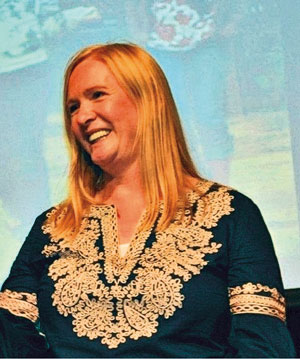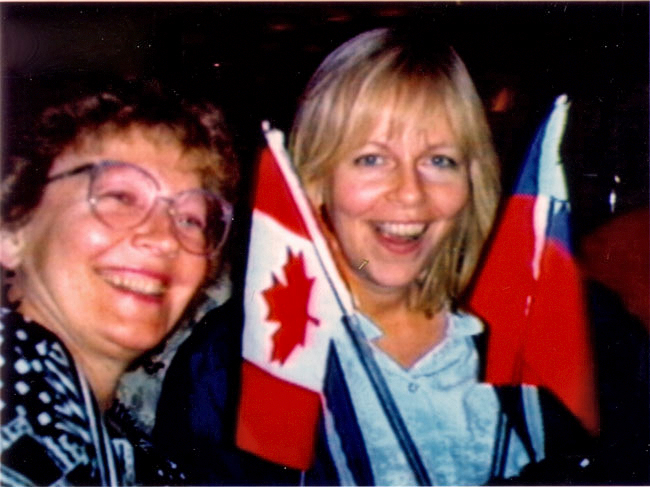“Who am I and who can I be?” An invitation to The Haven
Writing last week about The Vocation Myth and Impostor Syndrome, I was reminded of the four Identity Statuses outlined by James Marcia, a Canadian developmental psychologist who taught at Simon Fraser University.
Susan Clarke, Cathy McNally and I have recently referred to Marcia’s ideas in the 25-day Living Alive Phase I. This program offers all sorts of opportunities to delve into the question “Who am I and who can I be?” and Marcia’s model provides a very helpful frame for that enquiry. The model also offers clues to what goes on in Come Alive, The Haven’s 5-day “introductory” program.
It was Erik Erikson who coined the term “identity crisis,” proposing (for the first time in his 1950 book Childhood and Society) that the central challenge of adolescence is to resolve a conflict between identity achievement and identity confusion. Starting in the 1960s, James Marcia elaborated on this by suggesting that adolescence is better understood as an opportunity to both explore and commit to an identity, in areas such as intimate relationships, friendships, gender roles, politics, occupation, and religion.
While Marcia’s work focussed primarily on adolescence, it also applies to later life, especially when a person is confronted by other forms of crisis, or circumstances that lead them to question their identity and reassess their life. People often come to Come Alive and Living Alive Phase programs in situations of this sort – experiencing separation, loss of loved ones, health challenges, disruptions at work, depression, crises of confidence, and so on. Marcia described these situations as states of disequilibrium, mirroring the chaos that Virginia Satir said occurs when the status quo is disturbed by an element of change.
Marcia discusses four identity statuses – Foreclosure, Diffusion, Moratorium and Identity Achievement – and characterizes them by the levels of exploration and commitment present in each, as shown in the chart below.
Here’s a quick overview.
Foreclosure (high commitment, low exploration): This is what happens when a person takes on a “ready-made” identity, with little or no exploration of alternatives. For example, a young person will go into the same profession as a parent, or take on their political or religious beliefs. As Marcia put it, “the individual about to become a Methodist, Republican farmer like his Methodist, Republican farmer father, with little or no thought in the matter, certainly cannot be said to have ‘achieved’ an identity, in spite of his commitment.” Marcia also discussed “negative foreclosure,” where a person takes on a fixed identity in direct opposition to what is expected.
Diffusion (low commitment, low exploration): People in this state attempt to sidestep the whole question of self-definition by avoiding both exploration and commitment. They are amorphous and tend to be socially isolated. They may not experience much anxiety, because they do not care about much; if they begin to care more they will either move towards Moratorium (see below) or become increasingly disturbed, negative and self-destructive.
Moratorium (low commitment, high exploration): These people are actively exploring themselves and their environment, searching for an identity. Marcia says they “report experiencing more anxiety than [others] … The world for them is not currently a highly predictable place; they are vitally engaged in a struggle to make it so.”
Identity Achievement (high exploration, high commitment): These people have experienced a crisis, have explored, and have made commitments. Marcia suggests that they have developed “an internal, as opposed to external, locus of self-definition.”
Perhaps you recognize yourself in this model, in the ways you have reacted or responded to crises at different stages of your life. Perhaps you are facing a crisis right now.
Crisis and disequilibrium are inevitable facts of life. They are often painful, and can be disastrous. Potentially, however, they can lead to periods of “reconstruction,” which Marcia called moratorium-achievement-moratorium-achievement or MAMA cycles, a growth process developed through both exploration and commitment.
Come Alive and the Living Alive Phase programs can help you see the places you have been in your life with understanding and compassion. The Haven is an invitation into an exciting, relational process of exploration, commitment, and self-definition.
In Erikson’s scheme of life stages, successful negotiation of such crises of identity opens the door into a life of intimacy, care, and faith. For many people, Haven programs have been vital steps on that path.
************************
Thanks to Denise Goldbeck for introducing me to James Marcia’s work.
************************
Toby Macklin is a member of The Haven’s core faculty. He has a blog at tobymacklin.com







